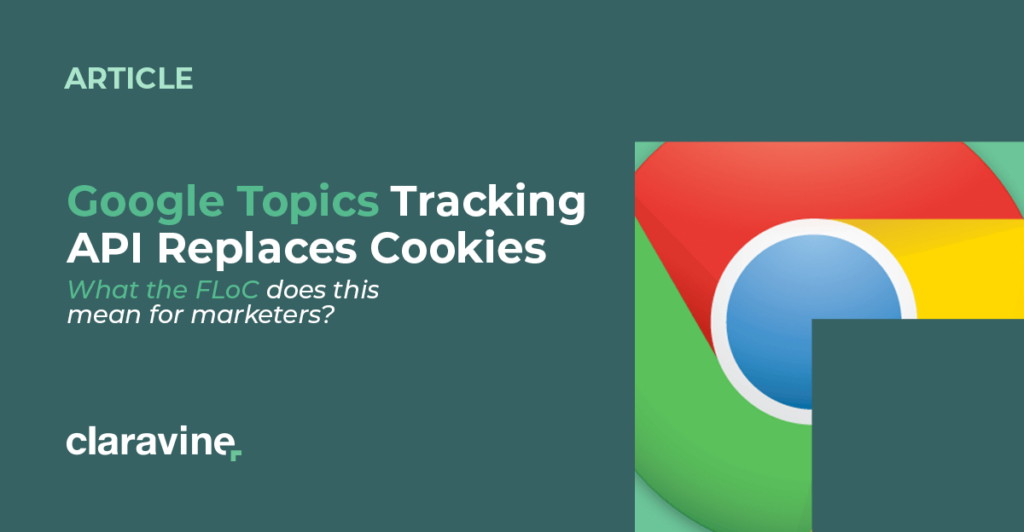What Are First Party Cookies? Are They Useful to Privacy-Conscious Marketers?

In a recent survey, 51% of senior-level US marketers revealed they continue to rely on third party cookies for the majority of their digital marketing strategy data — even though they know the end is ever closer. Sometime in 2023, Google Chrome will finally do what Firefox and Safari did years ago and block third-party cookies. (Have you heard about Google’s upcoming Topics?)
Smart brands recognize the need to shift to the collection method that’s not going away: first party cookies. According to Claravine’s first party data study, 72% of advertisers have already made plans to increase budgets and staffing to collect first party data.
Whether you’re in the planning stages, you’ve already expanded your first party data collection, or you’ve been putting off making changes altogether, we’ll cover what every digital marketer needs to know about first party cookies.
We’ll start with a definition of first party cookies and how they differ from third party cookies. Then we’ll touch on why you should incorporate first-party cookies in your marketing strategy. Finally, we’ll share how to expand your first party data collection.
First Party Cookies Explained
What is a First Party Cookie?
Before we define first-party cookies, let’s review: what is first-party data?
First party data is the information you collect about people who visit your website or mobile app. Because you collect it yourself, you can be sure of its accuracy and data integrity (granted you have data standards activated. This is why first party data is so valuable.
First party cookies are pieces of code that are automatically stored on users’ devices by the sites they visit. Their primary function is to support a positive user experience by recognizing returning users and their preferences. They also allow site owners to perform analytics and develop effective digital advertising campaigns.
First party cookie examples include:
- Passwords, language settings, and other preferences
- Mobile number, addresses, and other personal information
- Previous searches
- Pages viewed
- Session length
- Abandoned shopping cart items
- Visitor origin
- Number of visits
First party cookies are generally considered a good thing. They improve the user experience without compromising user privacy because they’re only accessible by the sites that created them.
What are Third Party Cookies?
Third-party cookies are pieces of code stored on your device by a website other than the one you’re visiting. In short: these cookies follow you.
Their primary function is to collect data about consumers’ behavior as they explore the web for ad targeting. Advertisers, publishers, and social platforms rely on this information to create relevant ads and other engaging content.
Third party cookies are also created when a site leverages functionality from a third party, such as social media buttons, live chat apps, and ad retargeting services.
First Party Cookies vs. Third Party Cookies: What’s the Difference?
The main difference between first and third party cookies is how they are created and leveraged by the website or domain. But let’s get more granular.
Generation and placement
1st party cookies: They’re generated and placed on your device by the website you’re visiting.
3rd party cookies: They’re generated and placed on your device by a site other than the one you’re visiting.
Accessibility
1st party cookies: They’re accessible only by the website that created them.
3rd party cookies: They’re accessible by any website that’s loaded the third-party’s server code.
Collected information
1st party cookies: They’re limited to personal data collected from interactions with the site you’re visiting, primarily to improve your experience on that site.
3rd party cookies: They collect user data from interactions across multiple sites to create more robust user profiles for ad targeting.
Browser support
1st party cookies: All browsers support first-party cookies. Website visitors can elect to block or delete first-party cookies, but it can impact their experience, particularly if they’re repeat visitors — some website owners block entry if you don’t accept their cookies, in order to protect a positive UX/CX.
3rd party cookies: Safari and Firefox automatically block third party cookies. Google Chrome will follow suit in 2023. In the meantime, users can block them by adjusting their settings in Chrome.
Future outlook
1st party cookies: They’re here to stay because they don’t violate consumer privacy laws and play a crucial role in website functionality
3rd party cookies: More privacy-minded advertising solutions are emerging as third-party cookies are phased out, allowing brands to continue targeting using Google Analytics and Google ads.
Examples of 1P and 3P Cookies
1st party cookies
You’re in the market for a new laptop, and you go straight to bestbuy.com. You select several favorites, two of which you add to your shopping cart. Then, you close the tab and consider your decision for a couple of days. Because the site uses first-party cookies, you discover your favorites and shopping cart items have been preserved when you re-access the site.
You may also receive an email about your abandoned cart, recommended items, or other personalized information.
3rd party cookies
Instead of doing all your laptop research on bestbuy.com, you browse other ecommerce sites and read reviews on multiple tech sites. When you visit your favorite news site later that day, you notice a relevant ad — it’s from Walmart advertising one of your favorite laptops for 10% lower than Best Buy.
Walmart used a third party cookie to track your behavior and drive you to their site to complete your purchase instead of Best Buy’s.
In this example, Walmart relies on a third party cookies because you hadn’t visited their website — if you had, they could have first party cookie’d you like Best Buy did.
You can see how Walmart would lament the loss of third party cookies. The challenge is to capture their competitors’ shoppers without them.
Why 1P Cookies are Essential for Your Marketing Strategy
Consumers are more concerned than ever about protecting their personal information. Yet 74% of us are still willing to share demographic information, preferences, and interests if it improves our online experience.
In other words, we’re cool with first party data. We’re just fed up with being tracked.
So if you’ve relied on third party cookies and third party data for targeted advertising, you can shift to a first party strategy with confidence. Know that a robust first party data strategy must include enterprise metadata management and an effective way to group and organize the customer data you collect (marketing taxonomy).
Both are necessary to build the relationships you’re accustomed to and the personalized, consistent experience 69% of consumers expect.
How to collect first party cookies and other 1P data
As of mid-2021, only 7% of digital marketers surveyed had switched to other data sources following Google’s initial announcement.
So you’re not alone if you haven’t made adjustments to your data collection strategy.
But with 2023 approaching fast, it’s time to get started. Learning how to collect first-party data is a good first step.











